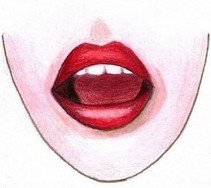Minimal Pairs Theory
Minimal pairs theory is a linguistic approach to speech intervention that emphasizes the role of the phoneme (speech sound) in language. The minimal pair method focuses on contrastive differences between phonemes.
What is a Minimal Pair?
A minimal pair is a word that differs from another paired word by a single phoneme. A simple example of minimal pairs is the word tip paired with the word sip. The contrastive phonemes in this instance are the phonemes /t/ and /s/. A guiding principle of minimal pairs therapy is that homonymy drives and prompts the child to change a sound error, or a series of sound errors, to the correct adult form. So a child who means to say, 'Can I have a sip of your drink?,' but instead produces an unintended meaning with 'Can I have a tip of your drink?' will be motivated to end semantic confusion by learning the adult form /s/ phoneme.
Ok, so far so good. But, now it gets a little more complicated. Have you given thought as to why the two phonemes in the above example - /t/ and /s/ - are considered minimal? Why, in fact, are they called minimal pairs? The word minimal refers to miniscule or least possible. I think the term least possible, or to be more accurate, least possible distance characterizes minimal pairs theory quite well.
What do I mean?
The reason the /s/ and /t/ phonemes are considered minimal and the words sip and tip are considered minimal pairs is because the phonemes /s/ and /t/ have few contrastive differences in relation to place, manner and voice. I'll cover place, manner and voice in more detail later in the article, but to truly understand minimal vs maximal it's important to be conscious of contrastive differences between sounds and what makes them contrast. This knowledge is essential to comprehend and correctly use other linguistic methods of speech therapy such as empty set and maximal oppositions.
Minimal Pairs Theory - Non-Major Class Features: Place, Manner and Voice
Understanding the importance of place, manner and voice is essential when choosing phonemes to contrast with a target sound. Place, manner and voice (PMV) are characterized by feature contrasts. Place of articulation refers to the use of lips, and the tongue, both coronal and dorsal features. Manner of articulation refers to whether a phoneme is a stop, fricative, affricate, glide, nasal or liquid. Voice refers to whether a phoneme is voiced or voiceless, i.e. does the larynx vibrate when a sound is produced or remain silent?
By the way, when linguists refer to coronal and dorsal they are describing features of the tongue. Coronal refers to consonants that are produced by the flexible front part of the tongue whereas dorsal refers to the posterior section of the tongue which produces velar and glottal phonemes.
As a group, the PMV features are considered non-major class distinctions, which contrasts them clearly with the major class distinctions in the English sound system, obstruents and sonorants.
Minimal Pairs Theory - Major Class Features
(Obstruents and Sonorants)
As the name suggests, an obstruent is a consonant sound that obstructs the airstream to produce increased air pressure, either partially, as produced in fricative sounds, or completely, as produced in stops. Obstruents can be sub-divided into three main groups: fricatives, which disturb the airstream but don't block it, stops, which block the airstream and then release it in an explosive burst and affricates, which feature aspects of both fricatives and stops.
In contrast to obstruents, sonorants are phonemes that are non turbulent and are marked by a continuous resonant sound quality. Consonants that are sonorants include nasals, glides and liquids. Vowels are also sonorants.
Minimal Pairs Theory - Minimal vs Maximal
Feature Contrasts
A minimal phoneme contrast has only one or several minor feature differences with a particular phoneme. For instance, the only feature contrast between pea and bee is that /p/ is voiceless and /b/ is voiced. Both the /p/ and /b/ share many features in that they are both labial stops. Similarly, the minimal contrast between pea and key is that the phoneme /p/ is a bilabial whereas the /k/ is a velar. In this instance, the minimal contrast is place, in that the phoneme /p/ is a labial stop, while the phoneme /k/ is a dorsal stop.
A maximal feature contrast is quite different from a minimal feature contrast but still follows the same principles. Phonemes with maximal contrasts have feature differences that are on opposite ends of the spectrum to phonemes with only minimal feature differences. Maximal contrasts can involve major class differences, such as obstruents and sonorants, as well as non-major class differences, specifically voice, manner and place.
For instance, as in our previous example, pea and bee are minimal pairs because the phonemes /p/ and /b/ are obstruents and also bilabial stops. The only difference is that one sound is voiceless, the other is voiced. In comparison, a maximal contrast to the word pea would be ree, where the phoneme /p/ is maximally contrasted with the phoneme /r/.
The phonemes are considered maximal contrasts because they feature significant sound differences in that /p/ is an obstruent whereas /r/ is a sonorant. The /p/ is voiceless, the /r/ is voiced. One is a bilabial stop, the other a coronal palatal.
Please click on the empty set therapy link or the multiple oppositions therapy page to learn more about linguistic methods of speech intervention for severe phonological disorder or childhood apraxia of speech.
References
Barlow, J.A. and Gierut J.A. (2002) Minimal Pair Approaches to Phonological Remediation Seminars in Speech and Language, Volume 23, No 1
Bowen, C. (2009) Children's Speech Sound Disorders Wiley-Blackwell
Williams, A.L. McLeod, S. & McCauley R.J. (2010) Interventions for Speech Sound Disorders in Children Paul H Brookes Publishing Co
Williams, A.L. (2006) SCIP Sound Contrasts in Phonology: Evidence Based Treatment Program. User Manual Super Duper Publications
Updated 11/2013
Return from Minimal Pairs Theory to Home Page

